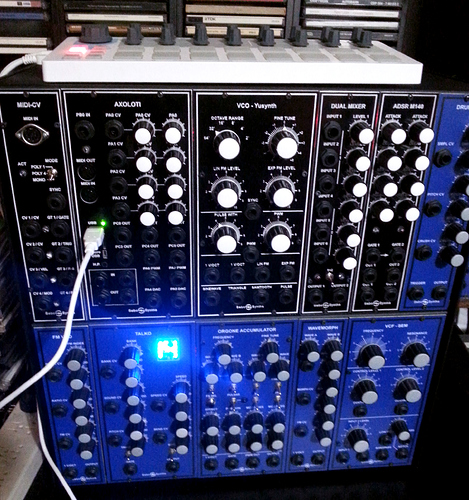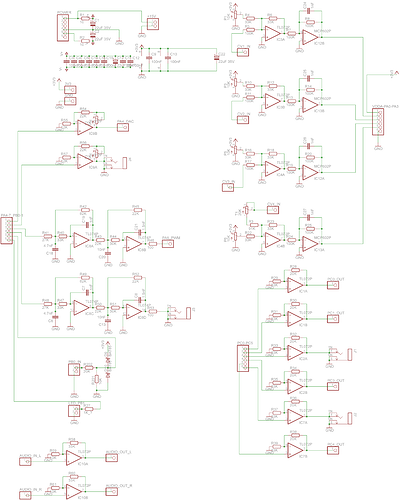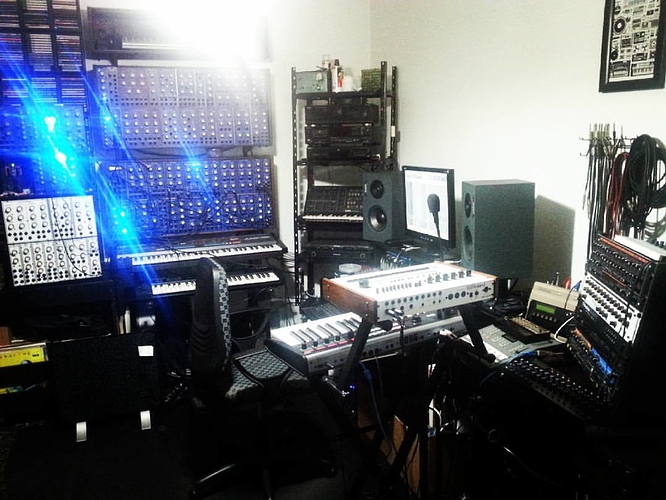Hi all:
I did a module with Axoloti for my 5U modular.
The module have:
4 CV inputs (CV control + CV Atenautor) connected to PA0 to PA3.
1 Digital Input (with voltaje protection) connected to PB0.
2 CV outputs (0 to 10V) connected to PA4 and PA5 DAC outputs.
2 CV outputs (0 to 10V) connected to PA6 and PA7 using PWM at 10KHz.
6 Digital outputs connected to PC0 to PC5.
1 LED connected to PB1.
Notes:
I used MCP6002 (not MCP602), just didn't have a library for the MCP6002 in Eagle. And they are powered with 3.3v and GND, the rest of the opamps are powered with +15v and -15v.
The filters for the PWM outputs are Bessel 4th order with a frequency cuttoff of 1KHz. I modified the pwmt3 objet to have a PWM frequency of 10KHz to have very good filtering of the carrier, but works well with a PWM frequency as low as 3KHz.



 and some of my own design
and some of my own design 

